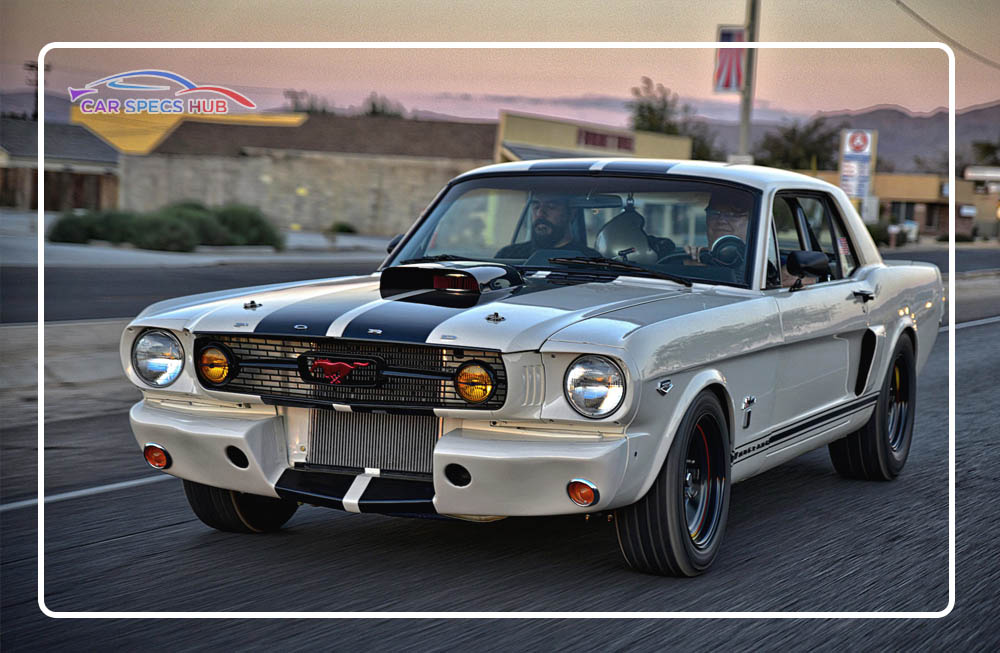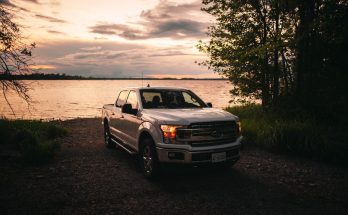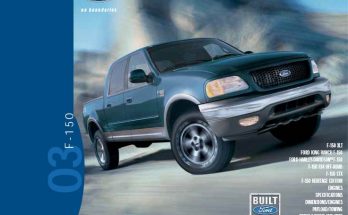
The 1966 Ford Mustang marked the second model year of the iconic pony car’s first generation, with subtle refinements to its design and features. Building on the immense success of its predecessor, the 1966 Mustang introduced minor styling updates, more options, and increased production numbers, making it one of the most popular and recognizable Mustangs ever. (Wiki)
Overview
| Feature | Details |
|---|---|
| Production Years | 1966 |
| Body Styles | Coupe, Convertible, Fastback |
| Platform | Ford Falcon-derived |
| Market Impact | Over 600,000 units sold; solidified Mustang’s success |
Engine Specs and Features
| Feature | Details |
|---|---|
| Engine Options | 200 ci (3.3L) I6, 289 ci (4.7L) V8 in multiple trims |
| Horsepower | 120-271 hp (depending on engine) |
| Torque | 190-312 lb-ft |
| Transmission Options | 3-speed manual, 4-speed manual, or 3-speed automatic |
| Fuel System | Single or 4-barrel carburetors |
| Cooling System | Water-cooled |
| Drive Type | Rear-wheel drive (RWD) |
Fuel & MPG
| Feature | Details |
|---|---|
| Fuel Type | Gasoline |
| Fuel Tank Capacity | 16 gallons |
| City MPG | 14-18 mpg |
| Highway MPG | 18-22 mpg |
| Combined MPG | 16-20 mpg |
Dimensions
| Feature | Details |
|---|---|
| Length | 181.6 inches |
| Width | 68.2 inches |
| Height | 51.0 inches |
| Wheelbase | 108 inches |
| Curb Weight | ~2,400-2,800 pounds |
| Ground Clearance | 5.8 inches |
Safety Features
| Feature | Details |
|---|---|
| Brakes | Manual drum brakes (standard); front disc optional |
| Seat Belts | Front lap belts (standard) |
| Body Construction | Reinforced unibody |
| Lighting | Sealed-beam headlights |
| Additional Features | Padded dashboard (optional in Deluxe models) |
1966 Ford Mustang Interior Features
| Feature | Details |
|---|---|
| Seating Capacity | 4 passengers |
| Upholstery | Vinyl or optional premium fabric |
| Dashboard | Functional layout with large, round gauges |
| Entertainment System | AM radio (standard); optional 8-track player |
| Climate Control | Manual heater (standard); optional air conditioning |
| Storage | Compact trunk with fold-down rear seats (fastback) |
| Interior Trim | Woodgrain accents (optional in Deluxe models) |
Exterior Features
| Feature | Details |
|---|---|
| Body Styles | Coupe, Convertible, Fastback |
| Headlights | Dual round sealed-beam headlights |
| Wheels | 13-inch or 14-inch steel wheels with hubcaps |
| Paint Options | Wide range of single-tone and two-tone finishes |
| Grille Design | Horizontal bar with galloping pony emblem |
| Bumpers | Chrome-plated |
| Windows | Manual crank-operated |
| Roof Options | Standard roof or convertible |
Current Price in U.S.
| Condition | Price Range |
|---|---|
| Excellent (Restored) | $30,000 – $50,000 |
| Good (Well-maintained) | $20,000 – $30,000 |
| Fair (Functional but Worn) | $10,000 – $20,000 |
| Poor (Needs Restoration) | $5,000 – $10,000 |
Summary
The 1966 Ford Mustang built on its predecessor’s success with minor updates, such as a new grille design, updated side scoops, and an expanded range of trims and options. Its blend of sporty styling, performance, and affordability appealed to a broad audience, cementing its status as a cultural icon. Today, the 1966 Mustang remains one of the most collectible and celebrated cars in automotive history.
Previous Model
From Showroom to Street: The 1966 Mustang’s Impact on Pop Culture
The 1966 Ford Mustang was far more than just an automobile; it was a vibrant symbol of 1960s American culture, a genuine revolution on four wheels. With its sleek design and distinctive engine growl, the Mustang captured the era’s spirit like no other vehicle. Decades later, it continues to hold an iconic status among car enthusiasts, collectors, and pop culture aficionados worldwide.
This article delves into how the 1966 Mustang transitioned from a dealership sensation to an enduring pop culture phenomenon. Whether you’re a classic car fan or simply curious about American automotive history, join us on a ride through time with this legendary vehicle.
The Birth of a Legend: The 1966 Mustang’s Rise
While the Ford Mustang first debuted in April 1964, the 1966 model year marked its ascendancy as one of the most coveted cars in the U.S. automotive market. Built on the reliable Ford Falcon platform, it brilliantly combined performance, style, and affordability. These traits made it an instant hit with young drivers, celebrities, and even suburban families.
The 1966 Mustang‘s impact is clear in these figures:
- Over 607,000 units sold – a remarkable record for the Mustang at that time, showcasing its immense popularity.
- Introduction of the Cruise-O-Matic automatic transmission, broadening its appeal to everyday drivers seeking convenience.
- Available in three versatile body styles: the classic coupe, the open-air convertible, and the sporty fastback.
- Highly accessible, with an attractive starting price of just under $2,500.
With its signature long hood, short rear deck, and the iconic galloping pony emblem, the Mustang became synonymous with individuality and freedom—perfectly aligning with the rapidly evolving American cultural landscape of the 1960s.
The 1966 Ford Mustang on Screen
It was only a matter of time before Hollywood recognized the Mustang’s undeniable on-screen charisma.
Early Cinematic & Television Appearances:
One of the Mustang’s most famous early film appearances was in the 1964 James Bond movie, Goldfinger. Though technically a 1965 model, this role undeniably boosted the Mustang’s image as a car synonymous with action, sophistication, and glamour.
By 1966, Mustangs were a regular sight across television and film:
- “The FBI” (1965-1974) prominently featured Ford Mustangs in its high-speed chase sequences, emphasizing their agility and power.
- “The Green Hornet” also showcased the Mustang alongside other Ford models, reinforcing its cool factor.
These frequent appearances solidified the Mustang’s status as the quintessential vehicle for cool, often rebellious, characters.
Rock ‘n’ Roll and the Open Road: Mustang’s Musical Connection
The 1966 Mustang forged a powerful link with the burgeoning music scene. During the explosive rise of rock ‘n’ roll, Ford shrewdly marketed the Mustang as the “car for the young at heart,” frequently sponsoring concerts and major music tours.
Ford even engaged in promotional activities by providing Mustangs to popular musicians and celebrities. This era saw an unprecedented merger of car culture and youth culture, with the Mustang positioned squarely at its epicenter.
Notable Celebrity Owners & Appearances:
Throughout the 1960s and 1970s, many prominent figures proudly owned Mustangs:
- Steve McQueen, the legendary “King of Cool,” famously drove a Mustang in the 1968 film Bullitt. While his was a 1968 Fastback, its iconic chase scene cemented the mystique and desirability of the entire Mustang lineage.
- Music duo Sonny & Cher commissioned custom Mustangs, which have since become an integral part of automotive folklore.
Racing Stripes and Triumphs: Mustang’s Motorsport Presence
Ford’s ambition extended beyond Hollywood and music; they were determined to make a statement in motorsports. While the 1966 Mustang wasn’t initially conceived as a full-fledged muscle car, its lightweight design and powerful available V8 engines made it a natural contender on drag strips and race tracks.
The Shelby GT350, a high-performance variant of the Mustang, was already making significant waves in SCCA (Sports Car Club of America) races by 1966. These high-powered Mustangs became an integral part of racing lore, inspiring generations of performance-focused drivers and enthusiasts.
Marketing Genius and Pop Art Aesthetic
Ford’s marketing strategies in the 1960s were remarkably forward-thinking. The Mustang was heavily advertised across magazines, radio, and, crucially, on television. Marketing campaigns directly targeted the youth demographic with compelling messages of freedom, adventure, and undeniable style.
Billboards of the era depicted vibrant Mustangs cruising along scenic California coasts, racing across vast desert highways, and artfully parked next to surfboards. The car was presented not just as transportation, but as a definitive lifestyle statement.
The 1966 Mustang was frequently featured in:
- Vintage print ads showcasing stylish young couples and adventurous road-trippers, embodying the era’s optimism.
- Colorful dealership posters adorned with memorable slogans such as “The Mustang Puts You Ahead” and “Only Mustang Makes It Happen!”, further driving its aspirational appeal.
This strategic marketing effectively linked the Mustang with the bold, dynamic, and colorful visual aesthetic of 1960s pop art – making it feel fast, vibrant, and full of life.
Mustang Mania: Toys, Models, and Collectibles
By 1966, the Mustang had transcended its status as merely an automobile; it had become a coveted collectible icon in the world of toys. Companies like Matchbox and Hot Wheels began producing miniature Mustang models, allowing children to connect with the brand from a very young age.
Today, these vintage toy Mustangs are highly sought after by collectors, with some commanding values of hundreds or even thousands of dollars. Ford also capitalized on the Mustang’s popularity by releasing official merchandise, including apparel, watches, and keychains, further embedding the brand into American homes beyond just the garage.
The Enduring Legacy: Mustang in Modern Culture
More than 50 years on, the 1966 Ford Mustang remains a cherished piece of Americana. It is a consistent highlight at:
- Classic car shows and auctions, drawing crowds of admirers.
- Retro-themed events and drive-ins, perfectly fitting the nostalgic atmosphere.
- Music videos and nostalgic advertising campaigns, where its presence instantly evokes the spirit of yesteryear.
It’s also a perennial favorite among restoration hobbyists, inspiring countless YouTube channels and TikToks dedicated to bringing these timeless machines back to their former glory.
Modern pop culture continues to pay homage to the classic Mustang:
- The hit series Stranger Things, set in the 1980s, features classic Mustangs as part of its meticulously crafted retro aesthetic.
- Music videos by artists like Bruce Springsteen and Kid Rock frequently showcase vintage Mustangs to evoke powerful themes of freedom, rebellion, and American heritage.
Final Thoughts: More Than Just a Car, a Cultural Phenomenon
The 1966 Mustang was far more than a meticulously designed vehicle. It was—and continues to be—a potent symbol of independence, youthful ambition, and quintessential American cool. Its deep integration into movies, music, racing, and the broader lifestyle of the 1960s set an unprecedented standard for what a car could mean to an entire generation.
For car enthusiasts in the USA and across the globe, the ’66 Mustang will forever stand as a vibrant reminder of the golden era of motoring and the profound power of a perfectly timed cultural phenomenon on four wheels.



